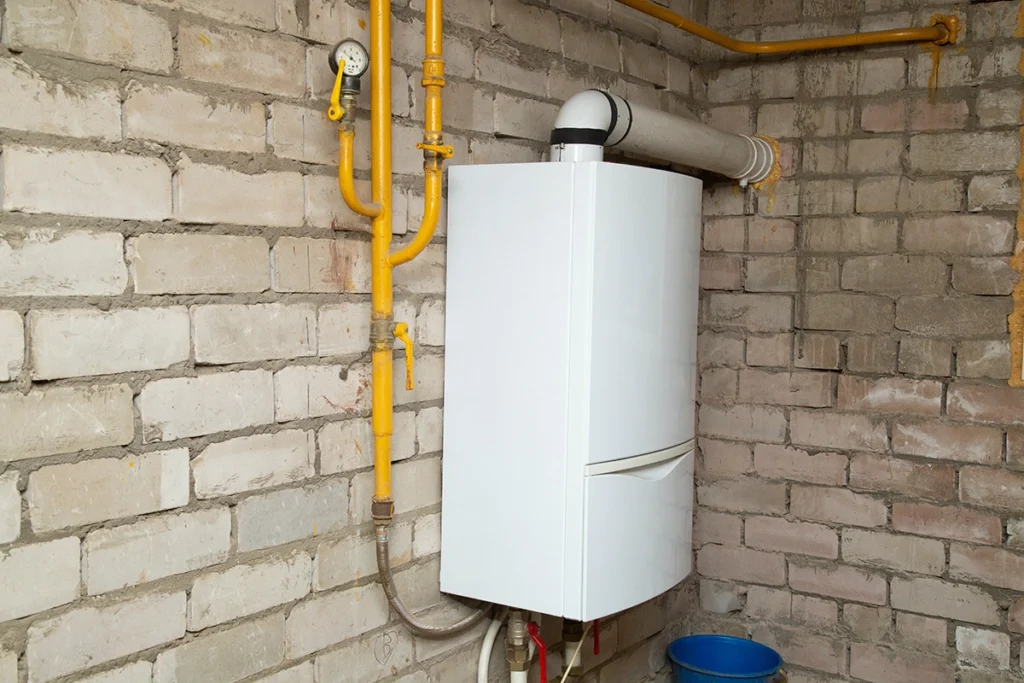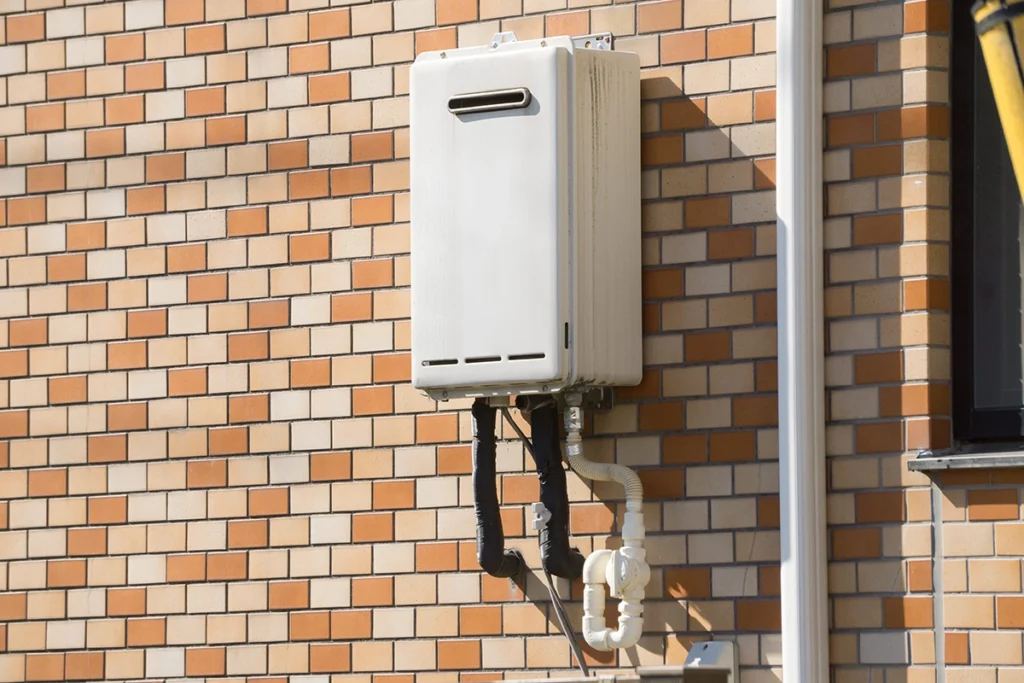Massachusetts summers can be relentlessly humid. Records have shown that in some months, particularly in July and August, humidity can reach 82% to 85%. This is like walking through a steamy bathroom, where the air feels incredibly thick and heavy. Just as humidifier installation can offset the dryness of winter, dehumidifiers can help reduce the wet summer heat and give your HVAC system a break.
However, investing in a high-quality dehumidifier is crucial. Here’s a comprehensive guide on how to select the ideal unit, considering your specific circumstances.
Dehumidifier Basics
The air in your home naturally contains water vapor. You may experience increases in indoor relative humidity because of things like cooking, cleaning, and showering.
When the air cools, it loses its ability to retain water vapor, leading to condensation. Dehumidifiers capitalize on this principle. Dehumidifiers have fans that draw in humid air from your indoor space. This humid air is then passed over cooled coils, where moisture condenses, leaving the air drier as it blows through your ducting and vents. The condensed moisture clings to the coils and gradually drips into a reservoir or out through a drain line.
Depending on the dehumidifier, the reservoir can either be removable (for manual emptying) or piped to a drain (for continuous operation and whole-house models). Models with removable reservoirs are designed to prevent overflow, often incorporating an automatic shut-off function that stops operation when the tank reaches capacity.
Choosing a Dehumidifier
There are various types and models of dehumidifiers available today. There are key factors you should consider.
1. Size
Dehumidifiers are rated by the amount of moisture they can remove from the air within 24 hours. For example, a 250-milliliter dehumidifier can remove 250 millilitres of moisture in the air per day.
Consult with an HVAC technician to make an informed decision on the ideal whole-home dehumidifier capacity for your space. Proper sizing is a fundamental requirement. A small unit won’t effectively control humidity in a large home. It will take a lot of time to clear water vapor, which causes it to deteriorate much faster and consume excessive energy. On the other hand, an oversized dehumidifier may short cycle, which can reduce its efficiency and lifespan.
2. Energy Efficiency Ratings and Running Costs
The energy efficiency of a dehumidifier is determined by how many litters of moisture it can remove per unit of energy consumed. It’s expressed in litters per kilowatt-hour (L/kWh) and is referred to as the integrated energy factor (IEF).
Although the range is not fixed, acquiring a unit with a higher IEF rating will translate into greater efficiency. A safe bet would be to get a dehumidifier with an ENERGY STAR label. These models are designed to be more energy-efficient, and the federal government tests them to verify that they can operate optimally while consuming the least power.
3. Features and Functionalities
Look for a dehumidifier with features that enhance your convenience and optimize performance. For instance, a unit with a remote-control feature will allow you to monitor and adjust settings effortlessly using your smartphone. Auto-reset is also a great feature to consider. It ensures the unit retains your preferred settings after a power outage or shutoff.
4. Noise Level
Many modern dehumidifiers operate within the 40 to 55 dB noise level range, which is comparable to a background conversation. However, you can find quieter units with sound levels as low as 30 dB (whisper quiet).
These low-noise models incorporate advanced technologies like variable-speed fans, sound-dampening materials, and thermoelectric cooling. If you are looking for a dehumidifier for your home office, bedroom, or other quiet space, prioritize such features.
5. Price and Warranty
When choosing a dehumidifier, it’s important to strike a balance between affordability and long-term value. Lower-cost models provide the basic features needed to dehumidify space. However, premium units offer greater energy efficiency, advanced controls, and superior durability.
Also, consider warranty coverage. Dehumidifiers fail and break down like any other equipment. Warranty coverage will help with the cost of repairs or a full replacement should your unit encounter issues within the specified period.
Types of Dehumidifiers
Dehumidifiers are categorized by either mode of action or placement. They include:
Refrigerant vs. Desiccant Dehumidifiers
Refrigerant-based models draw in air, cool the air to condense water, then warm it and blow it back into the room. Refrigerant dehumidifiers are ideal for the humid Massachusetts summers due to their high level of efficiency.
Desiccant dehumidifiers use hydrophilic materials (substances with a strong affinity for water) like silica gel to extract moisture from the air. Advanced models feature a rotating disc or wheel coated with moisture-absorbing materials. This component captures water vapor from the air and then rotates through a regeneration zone where heat is applied to release the absorbed moisture.
Portable vs. HVAC-Integrated Dehumidifiers
Portable dehumidifiers are standalone units designed for single rooms, apartments, or areas where humidity fluctuates. On the other hand, HVAC-integrated dehumidifiers are mounted near central heating and cooling systems. They provide whole-home moisture control, which is quite beneficial for larger houses or places with excessively high humidity, like Massachusetts.
It’s also important to note that whole-home dehumidifiers can use the same thermostat as the HVAC system. If you have a programmable or smart thermostat equipped with humidity sensors and controls, you can effortlessly adjust both temperature and moisture levels from a single interface.
Benefits of Installing a Whole-Home HVAC Integrated Dehumidifier in Massachusetts
Whole-home dehumidifiers generally last as long as a standard HVAC system. With proper maintenance, they can run efficiently for up to 15 years or more, unlike portable units that operate for only 3 to 5 years.
Another benefit is that integrated dehumidifiers significantly improve indoor air quality. Unlike portable units that only dehumidify the area they’re placed in, whole-house dehumidifiers regulate humidity levels throughout the entire home. This prevents mould, fungi, and bacterial growth in hidden areas such as wall cavities, basements, and attics. Additionally, by maintaining optimal humidity, they also reduce allergens like dust mites and other suspended air particles, creating an overall healthier living environment.
Finally, whole-home dehumidifiers offer long-term energy efficiency, running as part of the HVAC system. High humidity levels force air conditioners to work harder to cool a home. This is because air rich in moisture takes longer and more effort to lose heat due to its higher heat capacity. Dehumidified air, on the other hand, feels cooler, allowing you to set the thermostat at a higher temperature without sacrificing comfort.
By not having to work too hard to keep your home comfortable, your cooling system will experience less wear and tear on its components. Repairs will be minimal, and its overall lifespan will be significantly extended, saving you money on costly replacements down the line.
Contact Efficiency Plumbing, Heating & Air for More Information
Choosing the right dehumidifier for your Hanover, MA home requires careful planning and strategy. Don’t hesitate to call Efficiency Plumbing, Heating & Air for expert indoor air quality guidance throughout the process. Our highly skilled and experienced HVAC technicians will assess your home and specific needs to help you select the best dehumidifier for optimal moisture control and efficiency. You can also reach out to us for dehumidifier repair, replacement, and maintenance services.
Call Efficiency Plumbing, Heating & Air today for dehumidifier installation in Hanover.





